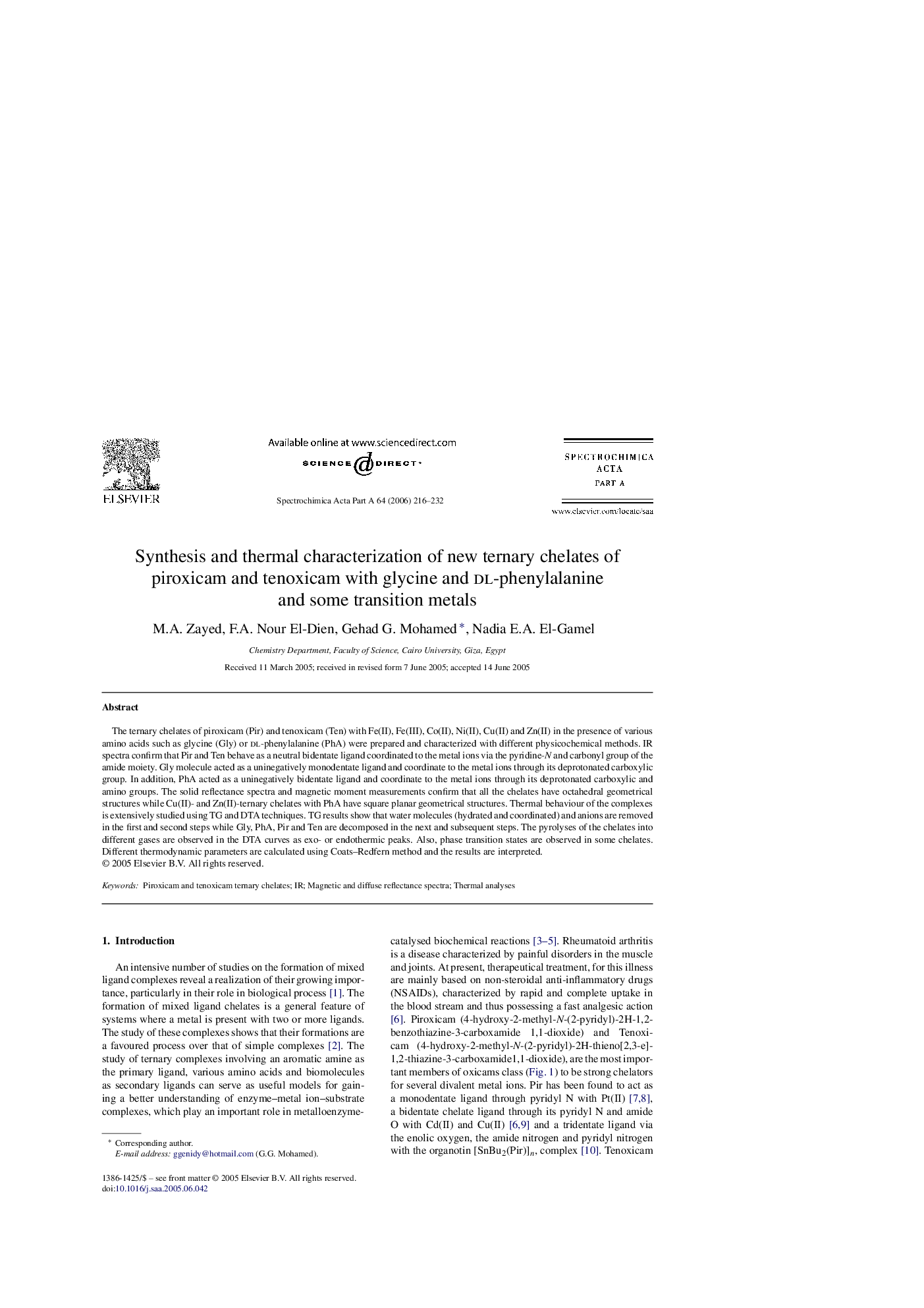| Article ID | Journal | Published Year | Pages | File Type |
|---|---|---|---|---|
| 1236741 | Spectrochimica Acta Part A: Molecular and Biomolecular Spectroscopy | 2006 | 17 Pages |
The ternary chelates of piroxicam (Pir) and tenoxicam (Ten) with Fe(II), Fe(III), Co(II), Ni(II), Cu(II) and Zn(II) in the presence of various amino acids such as glycine (Gly) or dl-phenylalanine (PhA) were prepared and characterized with different physicochemical methods. IR spectra confirm that Pir and Ten behave as a neutral bidentate ligand coordinated to the metal ions via the pyridine-N and carbonyl group of the amide moiety. Gly molecule acted as a uninegatively monodentate ligand and coordinate to the metal ions through its deprotonated carboxylic group. In addition, PhA acted as a uninegatively bidentate ligand and coordinate to the metal ions through its deprotonated carboxylic and amino groups. The solid reflectance spectra and magnetic moment measurements confirm that all the chelates have octahedral geometrical structures while Cu(II)- and Zn(II)-ternary chelates with PhA have square planar geometrical structures. Thermal behaviour of the complexes is extensively studied using TG and DTA techniques. TG results show that water molecules (hydrated and coordinated) and anions are removed in the first and second steps while Gly, PhA, Pir and Ten are decomposed in the next and subsequent steps. The pyrolyses of the chelates into different gases are observed in the DTA curves as exo- or endothermic peaks. Also, phase transition states are observed in some chelates. Different thermodynamic parameters are calculated using Coats–Redfern method and the results are interpreted.
